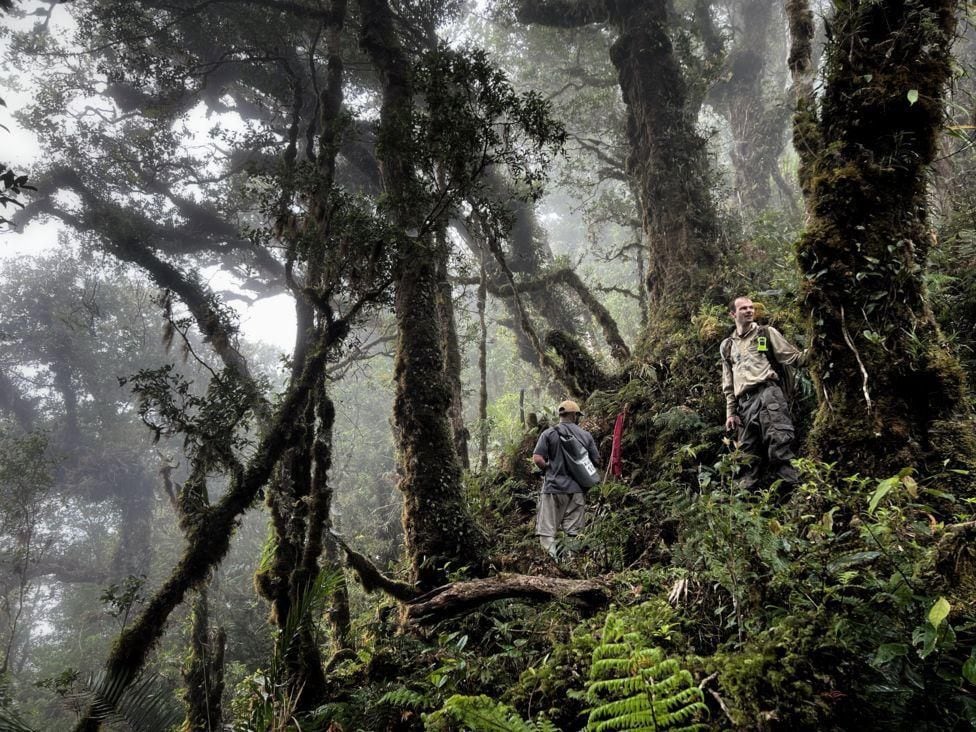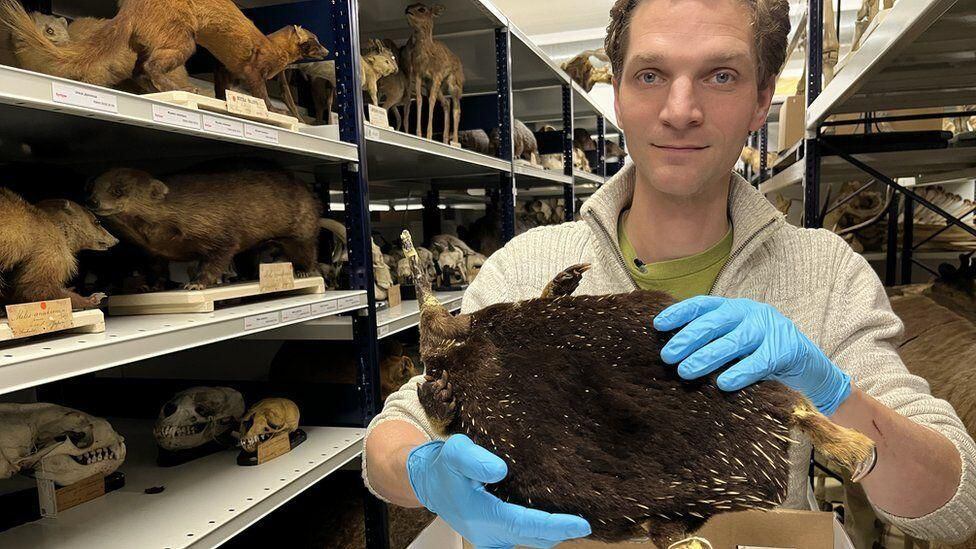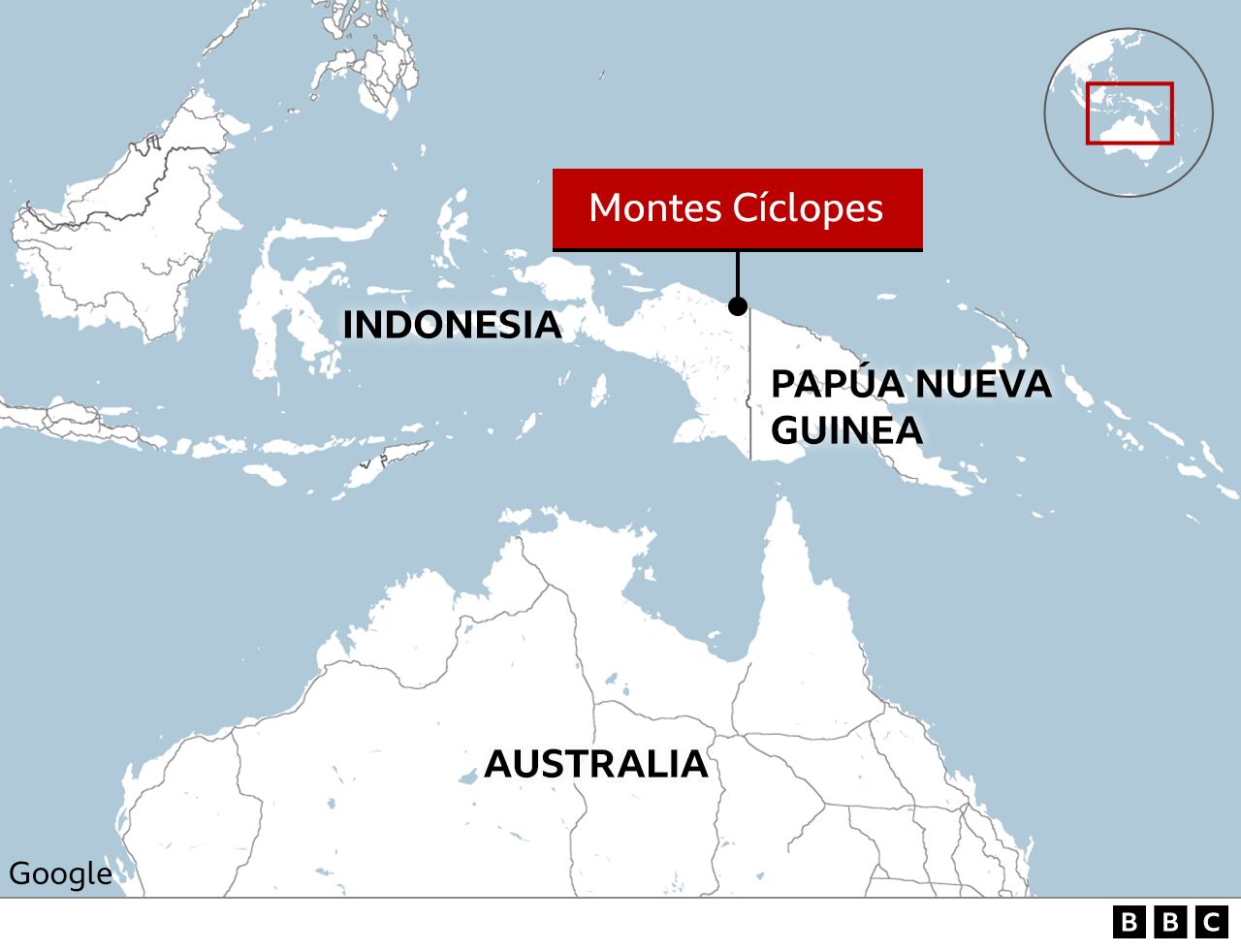They are believed to have appeared around 200 million years ago, when dinosaurs roamed the Earth, but one of them had never been seen alive until now.
He Attenborough’s long-beaked echidna is an egg-laying mammal feared to be extinct and named after British naturalist David Attenborough.
WATCH: Macron calls on Israel to stop killing women and babies in Gaza | BBC Interview
The images of the animal were captured by an expedition led by researchers from the University of Oxford who managed to record three-second clips of a long-beaked echidna with hidden cameras.
These animals with spikes, fur and beak were described as “living fossils”.
Until now, the only proof of the existence of this species was a dead animal that has been in a museum for decades.
“I was elated, the whole team was elated.“Dr James Kempton told BBC News about the moment he saw Attenborough’s echidna in footage from one of the expedition’s cameras.
“I’m not kidding when I say it was on the last memory card we looked at, on the last camera we picked up, on the last day of our expedition,” he explained, still in disbelief.
The echidna It is, besides the platypus, the only mammal that lays eggs.
Of the four echidna species, three have long beaks, and two of them, the Attenborough echidna and the western echidna, are considered critically endangered.
Approves
Kempton, a biologist at the University of Oxford, traveled for a month with a team of scientists from several countries to unexplored areas of the Cyclops Mountains, a steep jungle habitat located 2,000 meters above sea level in Indonesia.
In addition to finding Attenborough’s “lost echidna,” the expedition discovered new species of insects and frogs and observed healthy populations of tree kangaroos and birds of paradise.

But there is no doubt that the highlight of the expedition was observing the echidna in its habitat.
Previous expeditions to the Cyclopean Mountains have discovered signs of their existence, such as nose marks in the ground.
But they were unable to access the most remote areas of the mountains and provide definitive proof of their existence.
This has meant that during the last 62 years The only evidence for the existence of the Attenborough echidna was a specimen preserved in the Treasure Room of Naturalisthe natural history museum of the Netherlands.
“It’s quite flat,” says Pepijn Kamminga, director of the Naturalis collection, as he shows it off.

To the untrained eye, looks like a crushed hedgehogbecause when it was first collected by Dutch botanist Pieter van Royen it was not stuffed.
The importance of the specimen did not become clear until 1998, when X-rays revealed that it was not another species of echidna, but an adult specimen different from Attenborough’s.
It was then that the species was named in honor of David Attenborough.
“When it was discovered, people thought maybe it was already extinct because it was the only one,” explains Kamminga. “Then that’s it [el redescubrimiento] “It’s incredible news.”
“Sacred Mountains”
The Cyclops Mountains are steep and dangerous to explore.
To reach the higher altitudes where echidnas are found, scientists have had to climb narrow ridges of moss and tree roots – often in rainy conditions – with steep cliffs on either side.
While climbing the mountains, they felt earthquakes on two occasions.

Once scientists reached the highest parts, it became clear that the mountains were full of species new to science.
“My colleagues and I couldn’t stop laughing,” explained Leonidas-Romanos Davranoglou, a Greek insect expert.
“We were very excited because we always said ‘this is new, no one has seen it’ or ‘oh my god, I can’t believe I’m seeing this’. “It was a truly monumental expedition,” said Davranoglou.
“We must protect these sacred mountains,” added Gison Morib, a conservationist with YAPPENDA, an Indonesian non-profit organization that collaborated with the University of Oxford on the expedition.
“There are so many endemic species that we don’t know about,” he highlighted.
Source: Elcomercio
I am Jack Morton and I work in 24 News Recorder. I mostly cover world news and I have also authored 24 news recorder. I find this work highly interesting and it allows me to keep up with current events happening around the world.

:quality(75)/cloudfront-us-east-1.images.arcpublishing.com/elcomercio/TFZ5YGWP5NHIZLLVBYRDOW2YRI.jpg)





